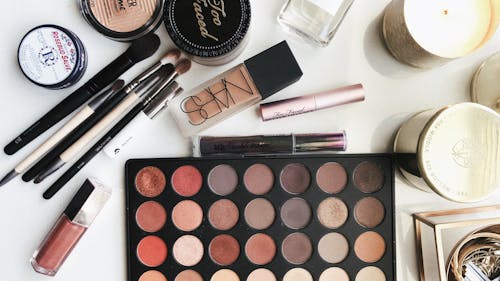Sustainable beauty products should always be in style

With Earth Day having just passed, I like many others find myself simultaneously more appreciative of our planet and anxious over her future.
Every day, it seems new statistics surface projecting the bleakness of what's to come. As a college student with marginal amounts of influence and autonomy, I struggle to be more sustainable and do my part to save the planet. But a great place to start is reevaluating the way we engage with the beauty industry.
The beauty industry, worth approximately $532 billion globally, is one of our leading pollutants. The expanse of chemicals and waste in the industry is extremely harmful to the environment and can be to the consumer, as well.
The average woman uses 12 beauty products a day, exposing herself to 168 chemicals. Once upon a time, using clean and natural products entailed driving out of the way to a mom-and-pop store and picking up no-name jars filled with gunky, pungent creams.
Today, enter any generic beauty store, and you’ll be faced with a slew of products claiming to be green, eco-friendly, non-toxic, chemical-free, etc.
While this age of naturally focused beauty may seem like an improvement to our chemically abundant, artificial past, it has paved the way for greenwashing.
Jenny Duranski, founder of Lena Rose Beauty, defines greenwashing as “a product makes claims to be natural, eco-friendly, organic or environmentally conscious — when they aren't any of those things — as a sales tactic.”
Greenwashing can be done through images on packaging, a product's descriptions or even the company name — anything that would make consumers believe the product is green.
Greenwashing is made possible through the unregulated nature of the beauty industry. There are no legal standards a brand must uphold to declare their products organic, natural, cruelty-free, renewable or sustainable.
It's up to the discretion of the brand, who of course has ulterior motives — namely money, money and more money. The heavy burden of navigating between facts and sales tactics in this supersaturated industry is therefore on the consumer.
Making sustainable choices can often feel inaccessibly expensive. But there are easy, frugal ways to be more sustainable with our beauty products, like repurposing old cosmetic containers and applicators.
Empty mascara? Use the brush as an eyebrow brush. Empty product bottles make the perfect containers for traveling and storing small items like bobby pins or pills. Empty perfume bottles can be used as flower vases, and shampoo bottles can be repurposed as brush holders.
Some brands have started initiatives where you can return empty bottles for refills. This saves money for both the consumer and the company as the refill often comes at a discount. Brands like Rihanna's skincare line, Fenty Skin, Milk Makeup and Kiehl’s all do this.
Beyond repurposing old applicators and containers, sustainability includes being selective with which brands to engage with. Apps like ThinkDirty and Skin Deep have created an easy way for consumers to learn what chemicals are in their products and be more chemically conscious.
The app does the work for you. Simply scan a product’s barcode, and it will give you an easy-to-understand list of ingredients as well as cleaner alternatives.
Being educated on toxic ingredients to avoid is crucial. The products we use daily include carcinogens, types of formaldehyde and chemicals that can disrupt hormonal and reproductive systems.
As it's exceedingly difficult for consumers to distinguish between marketing-based pseudoscience and legitimate fact in the beauty industry, I've consolidated a list of recommended science-based beauty influencers.
Michelle Wong, @labmuffinbeautyscience on Instagram, is an Australian chemist now working as a beauty influencer. Clean-beauty movement connoisseur Erica Douglas, @sisterscientist on Instagram, is a cosmetic chemist from the U.S. The goal of these influencers is to create a skin-tellectual public with widespread awareness about the products we put on our bodies.
Another environmental stressor that's prevalent in the beauty industry is the use of palm oil. Palm oil is semi-solid at room temperature and resistant to oxidation, so it gives products a creamy texture and a long shelf life.
As such, palm oil is used in 70 percent of beauty products. The problem, though, is that the harvesting of palm oil is a major contributor to deforestation and exploitative labor. Using Roundtable on Sustainable Palm Oil (RSPO)-certified products means that the palm oil has been harvested in a sustainable way. Unilever, Procter & Gamble, Mars, The Body Shop and Ferrero products are all certified by RSPO.
The frightful effects of climate change are palpable: There are scary undertones to 85-degree weather in March and 30-degree weather in April. As we look back at the celebration of our Earth this past Friday, there are various small ways we can each reevaluate our lifestyles and reduce our waste and carbon footprint.
Starting with small changes — like how we engage with the beauty industry — is a great way to build an impactful change.



